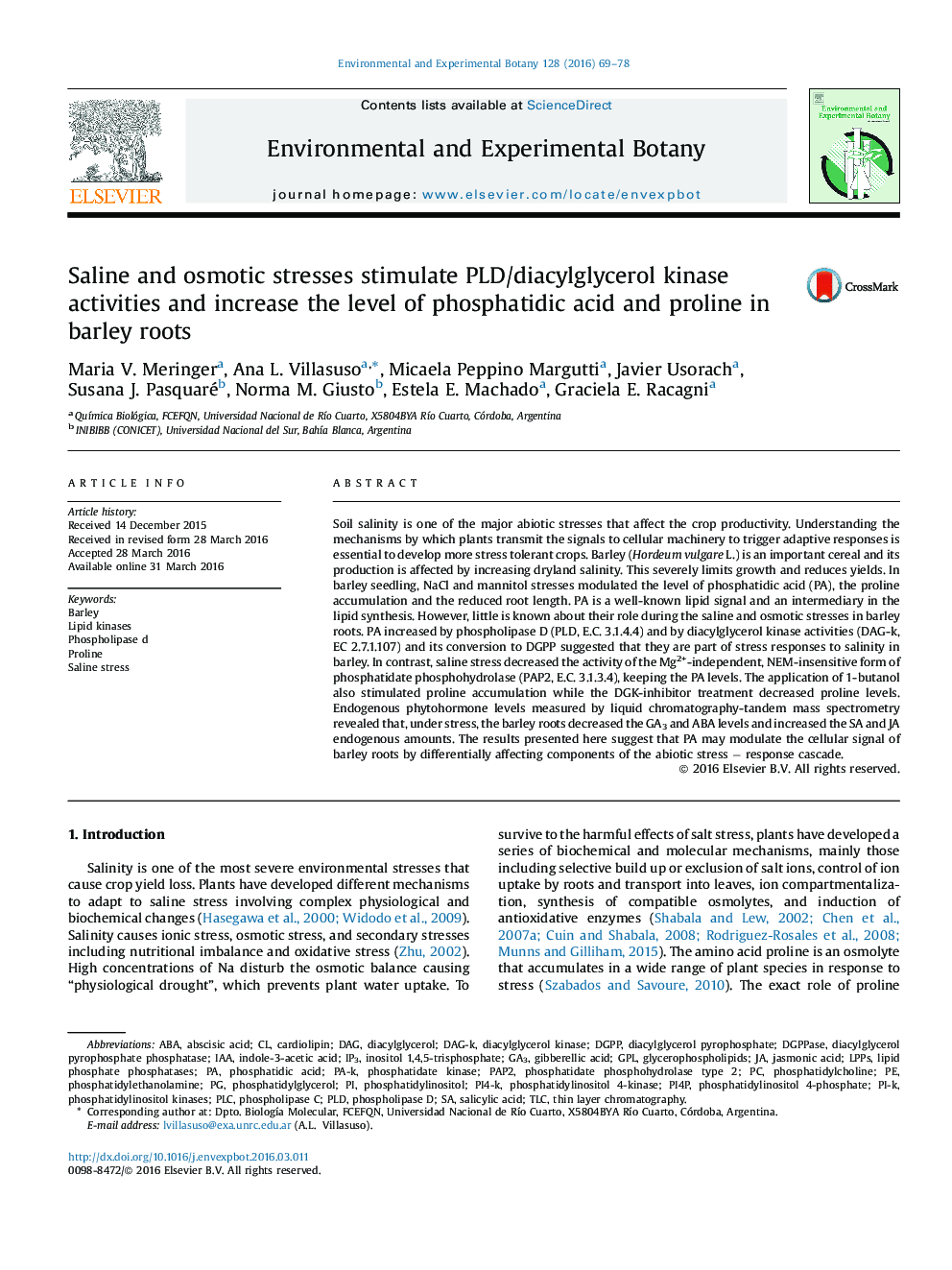| کد مقاله | کد نشریه | سال انتشار | مقاله انگلیسی | نسخه تمام متن |
|---|---|---|---|---|
| 4554082 | 1628049 | 2016 | 10 صفحه PDF | دانلود رایگان |

• In response to saline and osmotic stresses, PA increased by PLD and diacylglycerol kinase activities.
• NaCl and mannitol stresses increase the proline accumulation.
• In response to saline and osmotic stresses, the roots exhibited a reduced growth.
• Saline and osmotic stresses decrease the GA3 and ABA levels but increase the SA and JA endogenous amounts.
Soil salinity is one of the major abiotic stresses that affect the crop productivity. Understanding the mechanisms by which plants transmit the signals to cellular machinery to trigger adaptive responses is essential to develop more stress tolerant crops. Barley (Hordeum vulgare L.) is an important cereal and its production is affected by increasing dryland salinity. This severely limits growth and reduces yields. In barley seedling, NaCl and mannitol stresses modulated the level of phosphatidic acid (PA), the proline accumulation and the reduced root length. PA is a well-known lipid signal and an intermediary in the lipid synthesis. However, little is known about their role during the saline and osmotic stresses in barley roots. PA increased by phospholipase D (PLD, E.C. 3.1.4.4) and by diacylglycerol kinase activities (DAG-k, EC 2.7.1.107) and its conversion to DGPP suggested that they are part of stress responses to salinity in barley. In contrast, saline stress decreased the activity of the Mg2+-independent, NEM-insensitive form of phosphatidate phosphohydrolase (PAP2, E.C. 3.1.3.4), keeping the PA levels. The application of 1-butanol also stimulated proline accumulation while the DGK-inhibitor treatment decreased proline levels. Endogenous phytohormone levels measured by liquid chromatography-tandem mass spectrometry revealed that, under stress, the barley roots decreased the GA3 and ABA levels and increased the SA and JA endogenous amounts. The results presented here suggest that PA may modulate the cellular signal of barley roots by differentially affecting components of the abiotic stress − response cascade.
Journal: Environmental and Experimental Botany - Volume 128, August 2016, Pages 69–78